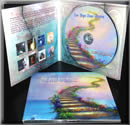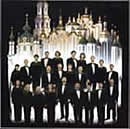Two Steps From Heaven

Classical Crossover

Sacred Choral Music
by Kiev Chamber Choir

Video:
Ukrainian Folk Music
Free Dog Clipart

Classical Crossover

Sacred Choral Music
by Kiev Chamber Choir

Video:
Ukrainian Folk Music
Free Dog Clipart
Russian Orthodox Church Sacred Choral Music on Amazon
ALL ABOUT
AVE MARIA LYRICS
Celine Dion: What Does She Sing?
MOBILE WEBSITE
 DOWNLOAD THIS SONG FOR FREE You won't find this song anywhere on the Internet. CHAPTER 5 : The Home Studio Microphone Guide Types of Mics: - Condencer microphone - Rybon microphone - Dynamic microphones Pickup Patterns Mic Picks for the Home Studio Ribbon Microphones Ribbon mics go back to the late ‘20s, when RCA embraced the technology and made it popular. Think of those images of Frank Sinatra standing in front of the RCA 77DX, the pill-shaped mic that was incredibly popular from the ‘30s through the late ‘60s. Ribbons were a studio staple through the mid ‘60s. The use of ribbons faded for a number of reasons. You need a very strong preamp to use them, ribbon mics tend to be on the more expensive side of the scale, and most notably, they are quite fragile. Drop a ribbon mic, blow into it, or slam a door in a tight room and the element is broken and it’s off to the shop. The element is literally a pressed ribbon of corrugated material (usually aluminum) stretched across a magnet, and that thin ribbon is liable to break with any amount of air pressure. Ribbon mics are still fragile, compared to dynamic mics and even condensers, but windscreen technology has advanced to make them less prone to destruction. A ribbon mic is not the most versatile mic, but what makes them so enduring is their mid-range detail. Ribbons were, and still are, very popular for some types of vocalists, but what they were predominantly used for in their heyday were horns. A saxophone, and most every brass instrument, has a signature mid-range that plays to a ribbon mic’s sweet spot. Dynamic Microphones Dynamic mics were originally designed to be a replacement for ribbon mics because they can handle high sound pressure levels (SPL) and can handle being thrown around. Dynamic mics don’t have nearly the character or articulation of a condenser, but they are very resilient to damage, even if they’re dropped. Dynamic mics are probably the most commonly used mic (think Shure’s SM 57). Dynamic mics are relatively inexpensive, and there are a host of uses for them, including recording drums, guitar cabinets, bass cabinets, horns — almost anything. In a studio, you won’t usually see them on vocals or an acoustic guitar, or anything that has a lot of detail in the top end, though there are notable exceptions to this rule.* In a live setting, a huge percentage of the mics being used are going to be dynamic. They’re designed to withstand a ton of abuse and keep feedback in check. *Bruce Swedien, who engineered the bulk of Michael Jackson’s catalog, used a Shure SM7B to record Jackson’s vocals on the Thriller album. Metallica and the Red Hot Chili Peppers have used the same mic, and the list goes on. The fact that these industry giants chose a $350 dynamic microphone for vocals is the ultimate case in point that a higher price tag doesn’t always mean it’s the right mic for the job. |
HOW TO MAKE HOME
|
DOWNLOAD THIS SONG FOR FREE
You won't find this song anywhere on the Internet.
HOW TO MAKE HOME RECORDING STUDIO